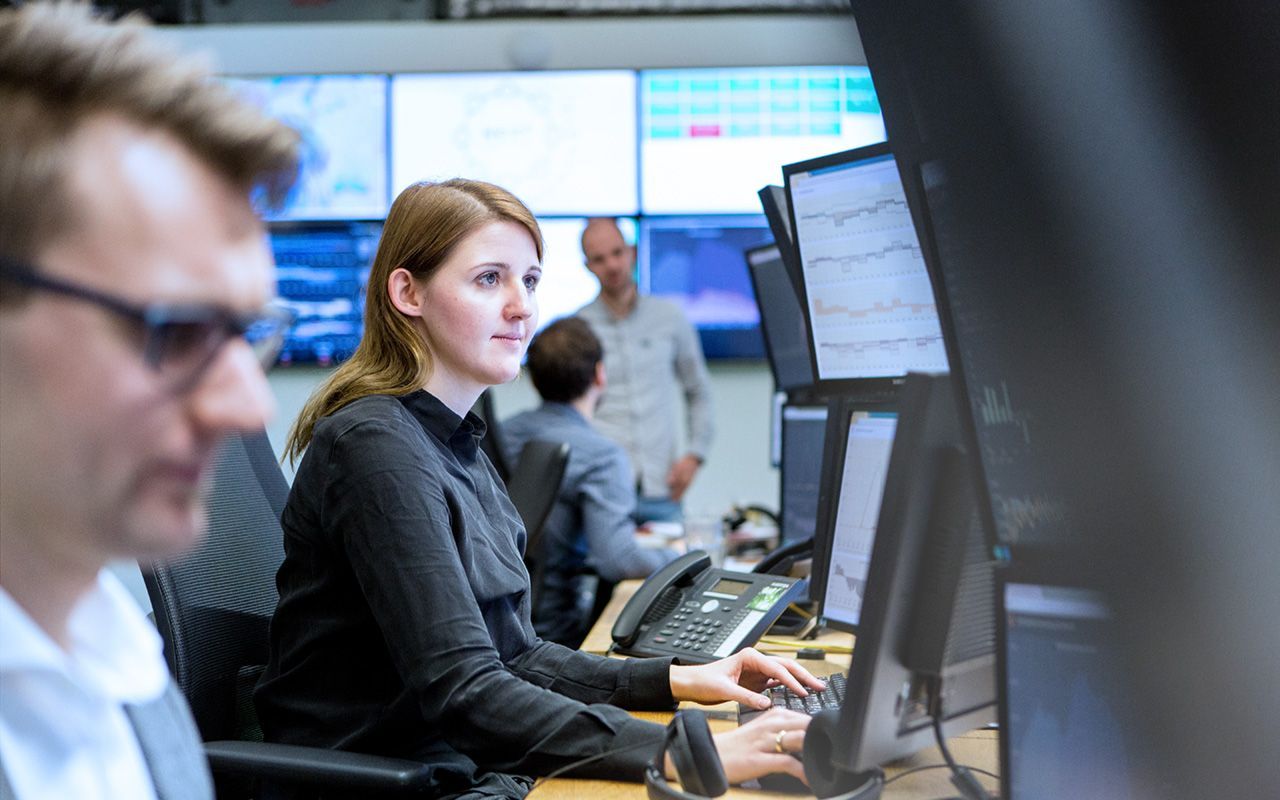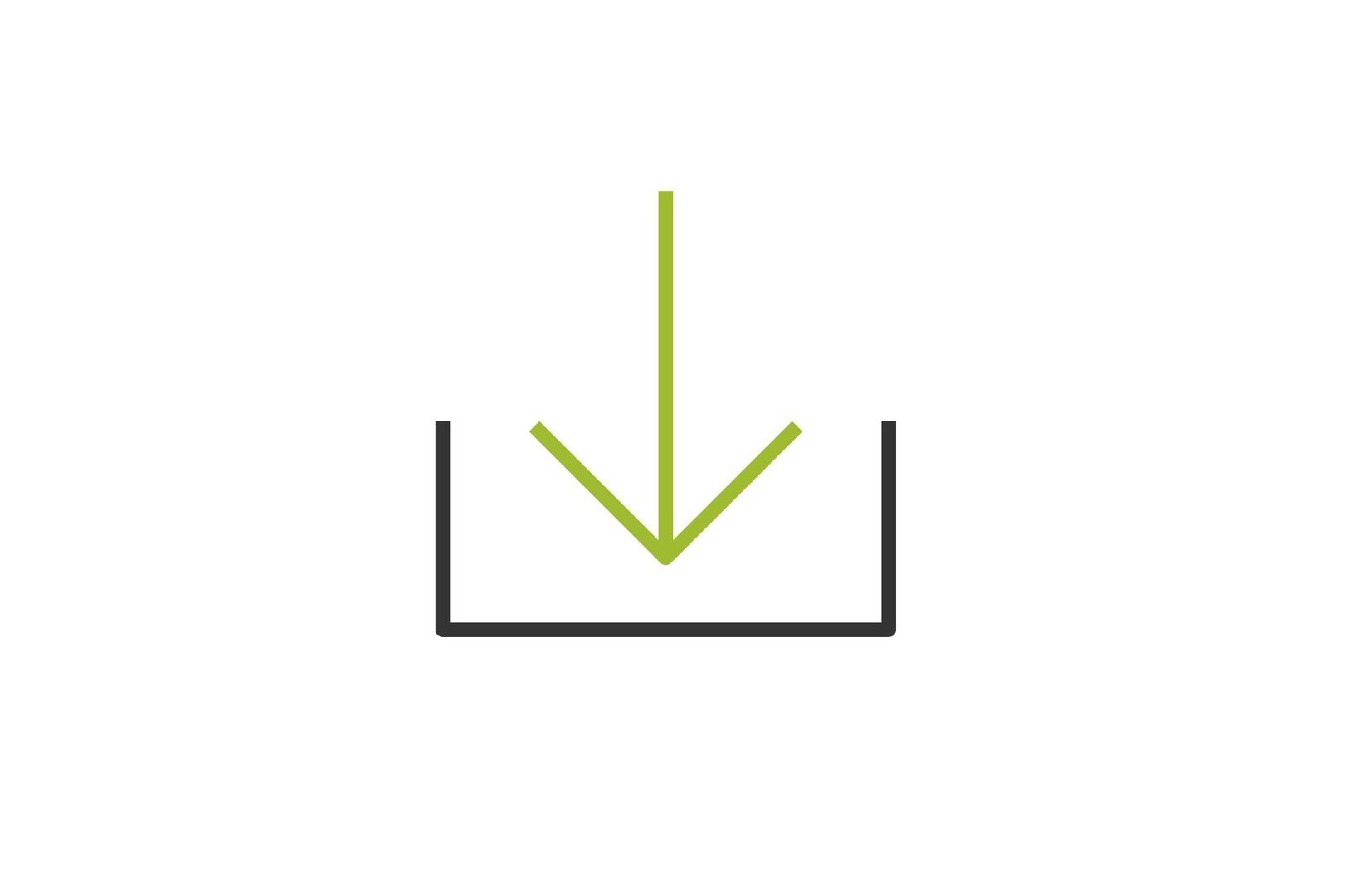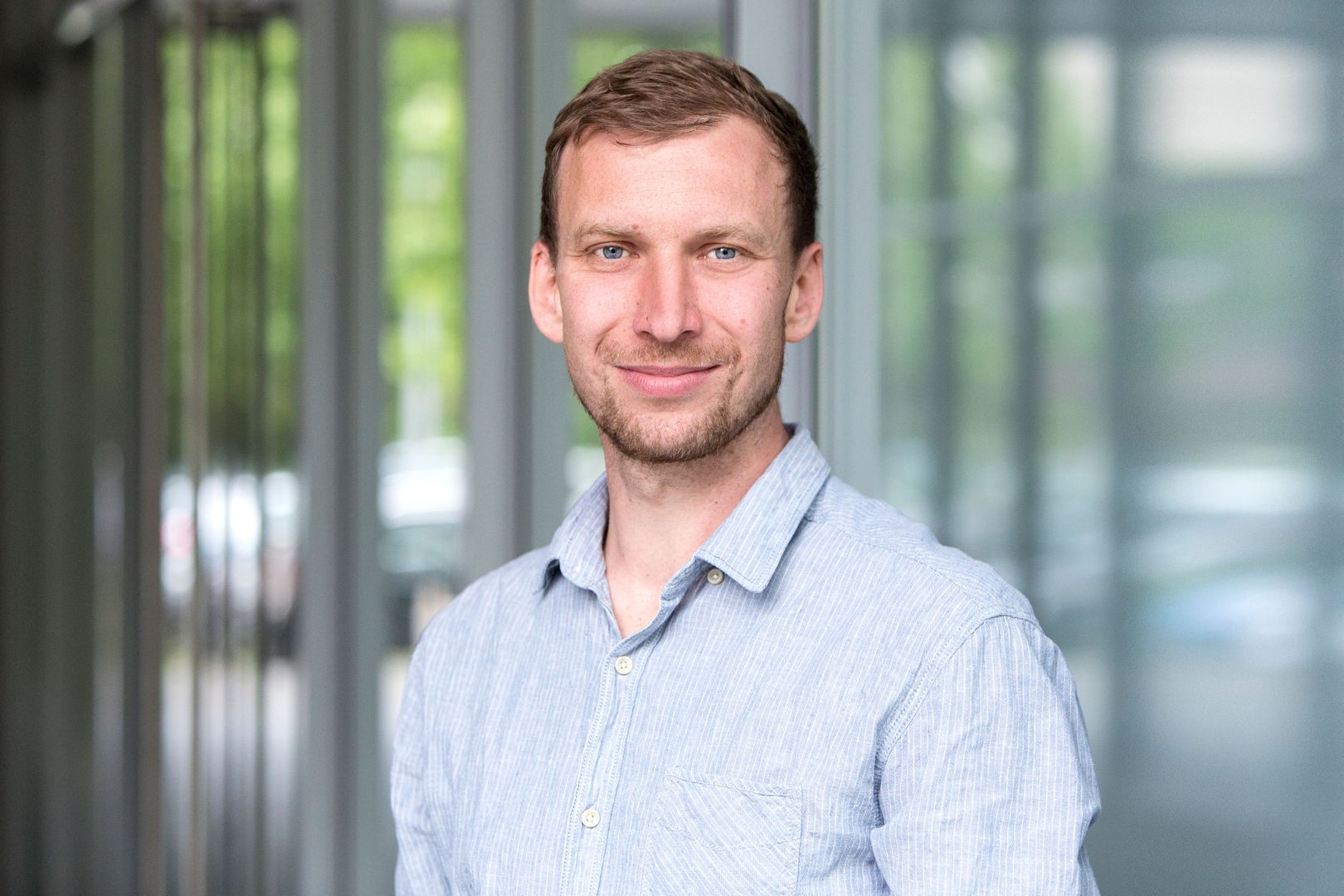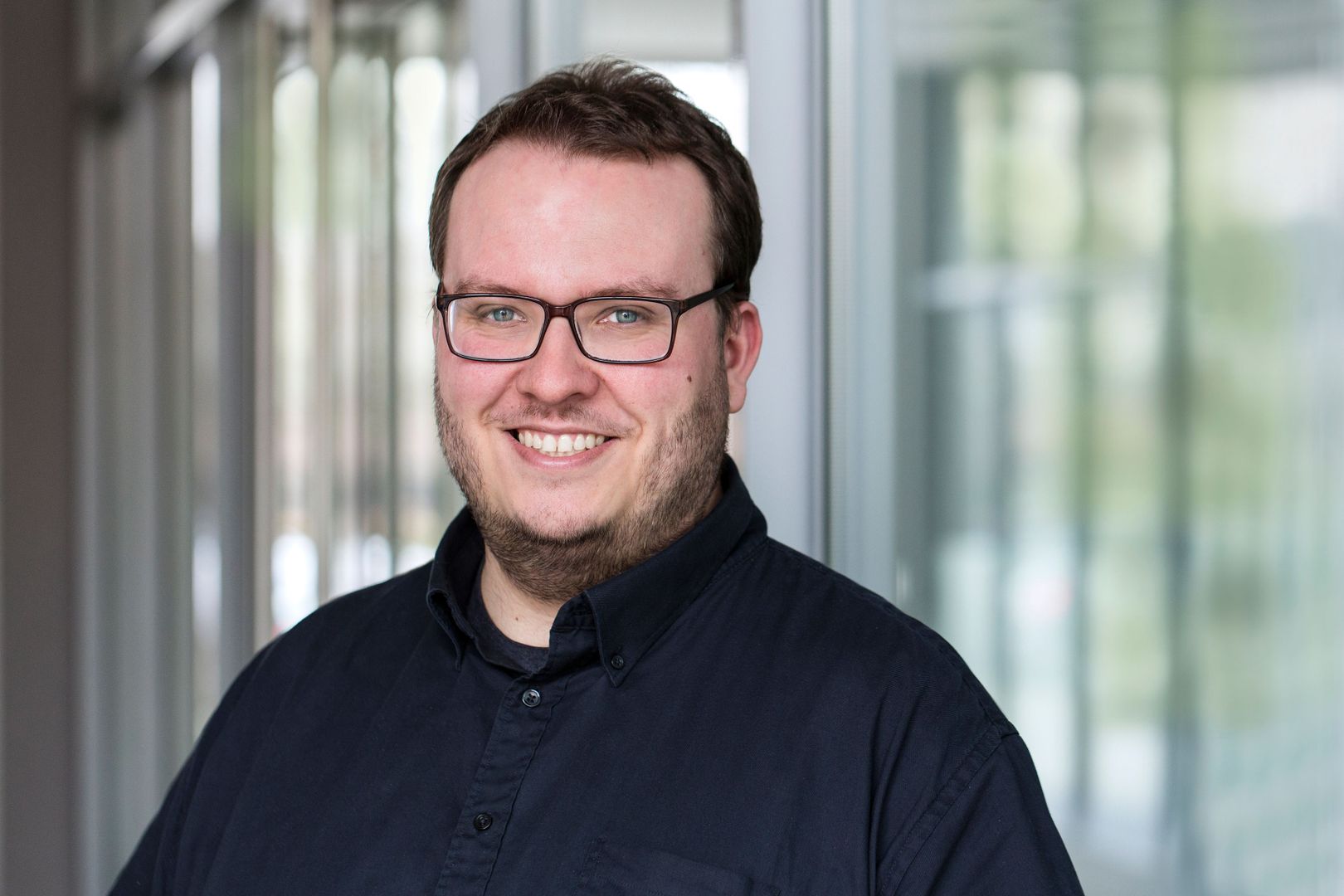Decentralized energy, seen through the eyes of a power trader
A successful energy transition is dependent on integrating decentralized energy systems. To clarify important questions regarding decentralization – including the upsides and challenges for energy systems – we spoke with Next Kraftwerke’s in-house power trader, Amani Joas.

Jan Aengenvoort: Amani, let’s start with some background knowledge: What’s the difference between us and conventional utilities?
Amani Joas: As provider and operator of a Europe-wide Virtual Power Plant (VPP), we aggregate many distributed production units and control them centrally. The idea is to network thousands of small units and provide enough flexibility for Europe to be 100 percent powered by renewable energy sources.
Furthermore, we have a strict non-asset ownership strategy. This means our VPP functions as a platform for asset owners. If you think of AirBnB as the world’s largest hotel without actually owning any real estate, or Uber as the world’s largest cab company without owning any cars, we are a large and growing power plant without owning a single production unit.
Jan: And why is flexibility so important for our energy system?
Amani: It is crucial to grasp the need for flexibility in a system powered by intermittent and fluctuating renewable energy sources. This essentially refers to wind and solar. Both are great in the sense that they do not have variable production costs and they do not produce emissions. However, as a power trader, I consider them tricky due to their dependency on weather conditions. In order to keep the grid balanced at all times, you need flexibility to fill the gaps.
Jan: But how do we profit from this flexibility?
Amani: First, we sell reactive flexibility to the transmission grid operators. They pay us for the ability to increase or decrease our production and consumption when they need to balance the grid. For this we obtain capacity payments and energy payments. Secondly, we offer proactive flexibility. This means that our power traders offer our power to the market when energy is scarce and hold it back when it is abundant. We do this on the day-ahead market and the intraday markets, where we take advantage of price spreads between time periods. In both cases, the asset owners benefit from our revenue sharing.
We believe in the smart, digital and decentral power grid
Jan: Is decentralized energy really the opposite of a centralized energy system?
Amani: Generally, I would answer this question by saying ‘it depends.’ But to make it more interesting, I will say, ‘no, it is not the opposite.’ Decentralization is not an end in itself, but the result of a necessary change in production technologies. There is nothing wrong with large, centralized power plants. However, in the interest of surviving the next few centuries, we need to switch away from CO2-emitting plants. These are usually large when compared with renewable plants, which tend to be small and distributed. This is what drives decentralization; a very complex and difficult process in a lot of ways.
If we complete this transition, the question about the future is how deeply you believe in the grid. One approach is the autonomous Tesla-style future, where everyone produces and consumes his or her own power with a PV/battery combination and we become more or less self-sufficient. The other model, let’s call it the “pooling model”, uses the positive pooling and network effects of a large electricity grid that is powered by smart and renewable sources. As a power trader, I firmly believe in the latter scenario, and our business model is based on the idea that the grid has a future (at least in industrialized countries). The best supporting arguments relate to the efficiency gains from pooling demand and supply. The costs of batteries – still very high – are another important factor.
Some believe in decentralization as an inevitable development in many areas. However, I do not think decentralization is the only way to go. If you look at computers, we moved from very centralized IBM machines to very decentralized personal computers with their own chips and hard drives. Today, we see re-centralization: computing and storage are conducted in the cloud from centralized providers. Our business is based on this idea of centralization within a distributed production system: we aggregate (or centralize) distributed supply and demand, and then sell the efficiency gains (flexibility) with power trading back to the market.
Jan: Will decentralization disrupt energy supplies, or just the businesses of traditional energy utilities and generators?
Amani: That depends on how they react. RWE and EON, Germany’s biggest utilities, have lost roughly 80 percent of their market value since 2007, which suggests a strong ‘yes.’ However, no one knows what would have happened if they had radically embraced the changes in the market and acted accordingly. Generally, a switch from conventional plants to renewables means that their conventional assets produce less and make less money, which is certainly a problem for them.
A power trader with a green conscience
Jan: How do we integrate decentralized energy sources and smart supply and demand
technologies with a ‘dumb’ grid?
Amani: We make the grid smarter. There is a lot of data out there that is not being used. The key is to obtain this information in real time and then to offer it to the market or the grid so both can act more efficiently. At Next Kraftwerke, we do this by installing our smart Next Box technology at each production and consumption unit. The Next Box gives us live production data, which allows us to monitor and predict our portfolio very accurately. It also allows us to control each unit remotely. We can counteract imbalances in our portfolio by ramping complementary units up or down, and it allows us to offer balancing energy to the grid operator. If the system needs to be balanced out, the grid operator can do this by controlling our plants. This is only a first step, but with smart meters in every home, power traders can become extremely good at using data to optimize our consumption and production behavior.
More to read
Jan: How have clients reacted to adopting the technology?
Amani: It took some time to overcome the initial skepticism. Some of our clients are asset owners of small distributed plants. They might be farmers who own and operate a biogas plant. Another type of client includes the transmission grid operators, and we provide them with balancing energy. We had to convince both groups that our technology is up to the task of providing reliable balancing power on short notice, and that we could handle the administrative process. Since we are very good at doing both, they have come to trust and like us.
Jan: What sort of cost reductions have you helped realize for clients?
Amani: For the plant owners, we create additional revenue streams rather than reducing costs. We share profits from running their plants more flexibly in peak hours and we share the revenue from providing balancing capacity and balancing energy. We also have demand-side customers, and they benefit from notable cost reductions. One example is a public dike in North Germany, which pumps out water after heavy rainfalls. Their demand is very flexible, so we can flexibly run their pumps when power is cheap on the intraday markets.
When companies like us and our competitors enter the balancing energy market, it helps grid providers and end customers significantly reduce balancing costs. They have seen cost reductions of 25 percent – around 150 million euros – over the past four years.
Jan: Are clients solely profit-driven or do they also have environmental/CSR concerns?
Amani: Both, although they are mostly profit-driven. Our clients are businesses, so they react according to incentives. However, many of them have a green conscience and are excited to be part of Germany’s Energiewende. The fact that they can help balance the grid is certainly a cause for hidden and well-deserved pride which also helps us.
Jan: Last but not least: Should governments actively support decentralized energy or should it be left to the private sector?
Amani: As a power trader, I don’t believe there has ever been an energy system fully financed by the private sector. For instance, the new nuclear power plant at Hinkley Point in England receives a guaranteed subsidy of around 11 EUR cents per kWh. In Germany, there have been PV plants auctioned with a subsidy of 6 EUR cents per kWh. It is also important to remember that conventional plants do not pay their true costs, which would include their negative external costs. I would love nothing more than a system that would involve a CO2 price and honest Pigouvian taxes for conventional plants. If we had that system, we would not need to subsidize renewables. However, since we do not live in this beautiful technocratic world envisioned by economists, we will have to take the second best option and subsidize renewables for the foreseeable future. We must remember: if we do not take this step, sooner or later the real costs of conventional power will become painfully clear, and this is already starting to happen.




